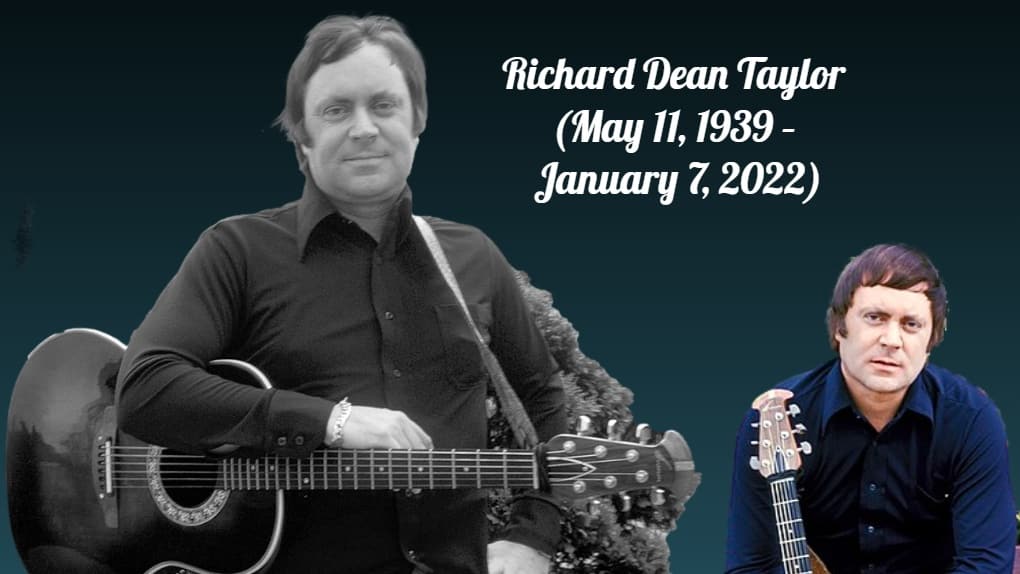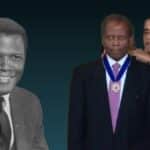Dean Taylor was shy, leaned into unusual melodies and offbeat storylines, and was one of the few white performers on the Black-owned label. And despite lending his pen as co-writer on Motown hits and soaring to the top of the U.S. charts with his single “Indiana Wants Me,” the Toronto-raised musician’s legacy has largely been forgotten.
Some even call him one of Motown’s most underappreciated artists.
When Taylor died Jan. 7 at his Los Angeles home at age 82, more than a year after he contracted COVID-19 and was placed in hospice care, he left behind decades of unrealized dreams that were sanded down by the entertainment industry’s relentless friction.
A screenplay he once hoped to bring to Hollywood. A memoir only partially finished. So many songs that were committed to tape but never released.
Inside the Motown Museum in Detroit, there’s nary a mention of his status as a chart-topper, said his widow Janee. Over the years, she’s asked the curators why, but their answers never satisfy.
“He loved Motown; he felt like they were family,” she said. “I think that was hurtful.”
The museum’s representatives did not respond to a request for comment.
Born Richard Dean Taylor in Toronto, he started performing at age 12 at local country and western shows.
By his early 20s, Taylor played piano and sang in Toronto bands, leading to his first solo single, “At the High School Dance,” a rockabilly tune that matched the era.
In 1963, a friend in Detroit contacted him to share a local newspaper article about the rising label Motown Records which was only starting to churn out hits. He said he could get Taylor an audition.
A meeting with Brian Holland and Lamont Dozier — two of the label’s treasured songwriting trio Holland-Dozier-Holland brought Taylor under their wing.
“When I joined Motown, I had to learn to write,” Taylor explained to Canadian journalist Larry LeBlanc in a 1972 profile written for Hit Parader magazine. “I could always write songs, but I couldn’t always write good songs. The difference between a hit and a good song can be a very small thing.”
The Holland-Dozier-Holland brand is attached to some of Motown’s most iconic hits, including most of the Supremes’ run of 12 chart-topping singles, “Baby Love” and “You Keep Me Hangin’ On” among them.
With the trio, Taylor often contributed without credit. Adam White, co-writer of the book “Motown: The Sound of Young America,” said Taylor’s work is woven into the Supremes’ “Love Is Here, and Now You’re Gone” and the Four Tops’ “Standing in the Shadows of Love.”
“He would often be paid in cash for contributions he made to songs, rather than songwriter credit,” White said.
Official credit came later on “Love Child” for the Supremes, “All I Need” for the Temptations, and “I’ll Turn to Stone,” recorded by the Four Tops.
Eventually, Taylor proved himself a valuable asset to Motown, which opened the doors to pursue his singing career. His debut 1965 single “Let’s Go Somewhere,” a bouncy protest song against discrimination, landed with a thud on the charts.
Those from bigger names eclipsed other songs. While Taylor continued writing for Motown artists, he pushed for his solo career with “Gotta See Jane” and “Ain’t It A Sad Thing.”
Both singles were minor U.S. hits with greater success in Canada and the United Kingdom. Still, Taylor’s interest in strong linear narratives in the spirit of country music was outside the typical Motown mold.
“He was a good songwriter, capable of producing rather unusual songs with good storylines that caught people’s attention,” said White.
“They were rather unusual records, I mean; they were certainly unusual for Motown.”
Dean Taylor hit the jackpot in 1970 when his song “Indiana Wants Me” rose to the top of the charts. It was the first time a white Motown artist had accomplished such a feat, and for a moment, Taylor was the label’s prized asset.
The momentum faded in a flash when his debut LP “I Think, Therefore I Am,” released that same year, was a sales dud.
Taylor wouldn’t entirely disappear at that point. His 1967 track “There’s A Ghost In My House,” which flopped on its initial release in North America, found a second life overseas when British DJ Ian Levine introduced the song into his sets.
That helped Taylor become one of the most prominent musicians in the region’s northern soul movement of the early 1970s. Its popularity led Motown to reissue the song in 1974, which pushed it to No. 3 on the U.K. charts.
In the 1980s, Taylor attempted a return to the music industry with the launch of his label Jane Records, his widow said, but the artists he signed never found fame.
“If nobody has a hit record, then no one hears about any of that,” she added.
Dean Taylor found other routes to happiness in his later years. He was a dedicated vegan, shared a passion for dogs with his wife, and loved old western TV shows. He collected antique novelty watches of cartoon characters — one of his prized possessions featured silent film cowboy Tom Mix on its face.
At one point, he constructed a recording studio at his home, where he recorded for several years. Janee said that that space became his bedroom when he went into hospice care last year. And it’s there the couple spent their final hours together.
“That night, I played all his songs on YouTube. We talked about our life – I talked, he wasn’t talking at that time – and I played his music. The next morning he died at 7:30,” Janee said.







